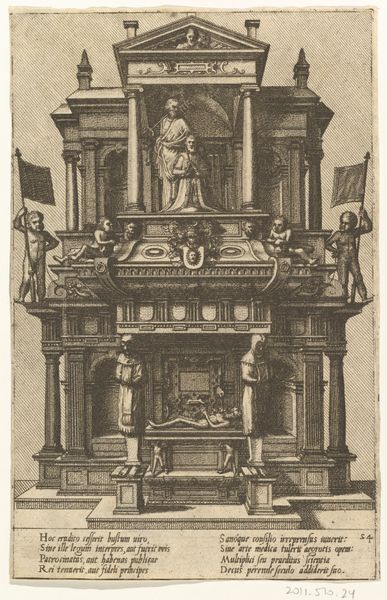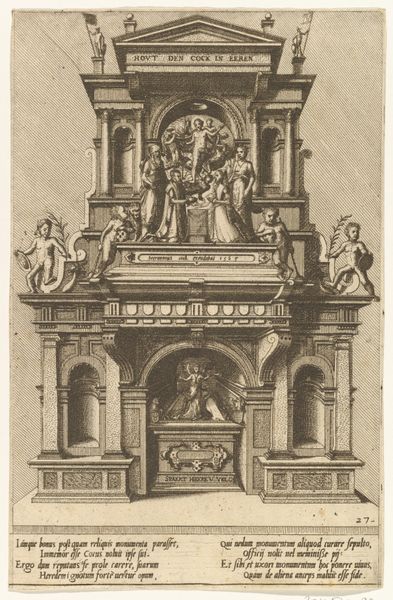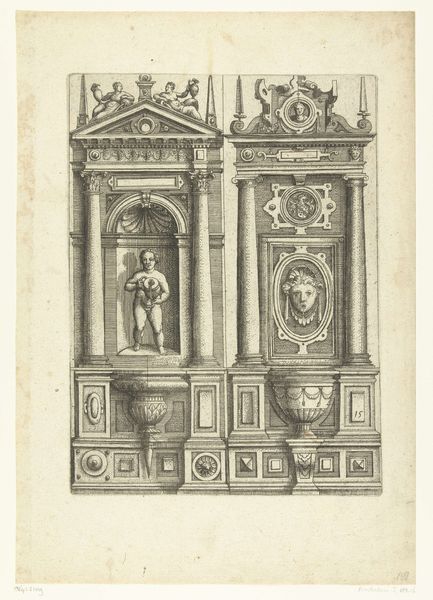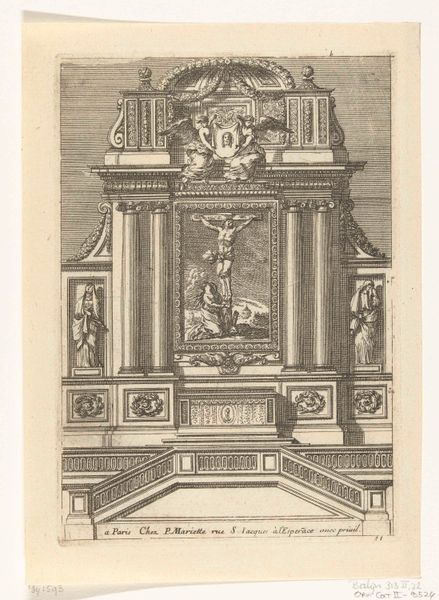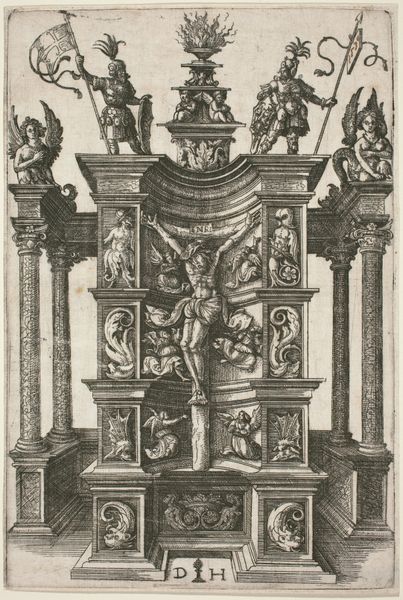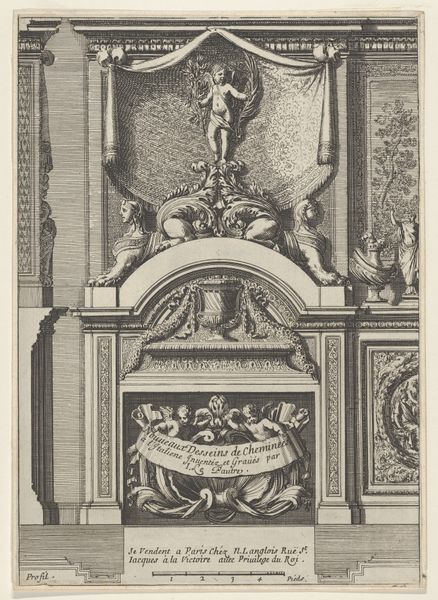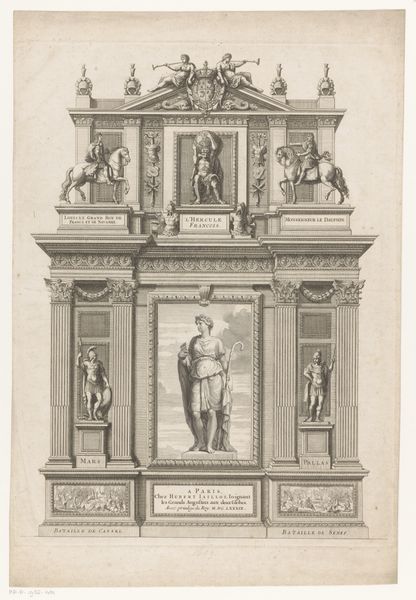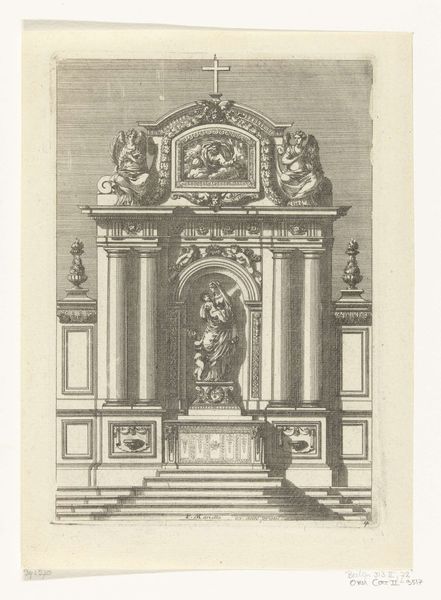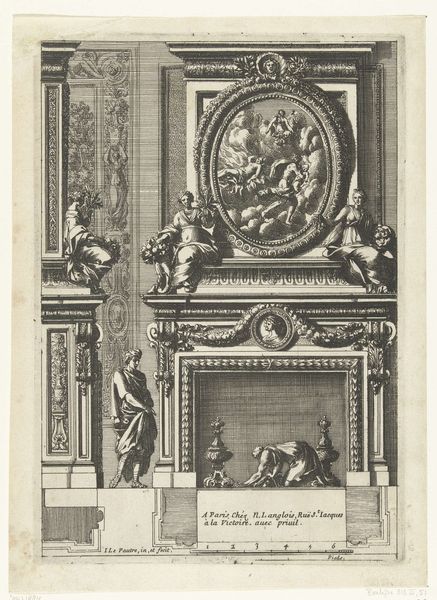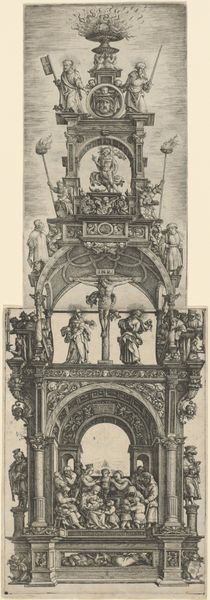
drawing, print, engraving
#
drawing
#
allegory
# print
#
mannerism
#
figuration
#
form
#
11_renaissance
#
line
#
history-painting
#
engraving
Dimensions: sheet: 9 1/16 x 5 13/16 in. (23 x 14.8 cm)
Copyright: Public Domain
Editor: This print, "Cœnotaphiorum (21)," was made by Hans Vredeman de Vries in 1563. It looks like an engraving, and depicts what seems to be a cenotaph or a monument. The image has a very formal, architectural feel. What do you see in this piece, from an iconographic perspective? Curator: What immediately strikes me is how this image blends the architectural with the allegorical. A cenotaph is, after all, an empty tomb. It speaks of absence and remembrance, but Vries populates this absence with a rich visual vocabulary. Consider the figure at the very top holding what looks like a trident—that's Poseidon or Neptune, traditionally a figure of power, holding sway over the seas. What does that evoke in you, positioned above an empty tomb? Editor: Maybe power surviving even after death? Or maybe power as the thing people want to be remembered for? Curator: Precisely! Now, notice the skull and sleeping figure… these are symbols tied to mortality, yes? They sit alongside portraits, shields, and figures pulled from mythology and civic life, all stacked one on top of the other. There’s a real tension between the celebration of worldly achievement and the ever-present reminder of death's inevitability. Editor: So, the combination of symbols creates a more complex meaning than each could have alone? Curator: Yes, exactly! And the monument becomes more than just stone. Through these carefully placed symbols, Vreideman de Vries speaks to anxieties around legacy and the cultural memory we try to construct through these...visual statements. I wonder what anxieties were specifically being spoken to here during the Renaissance? Editor: It's fascinating how much history can be embedded within what initially looks like just an architectural drawing. It makes you see the piece, and that period of history, differently. Curator: Agreed. And I’m left wondering, who did Vreideman de Vries intend to celebrate and for what deeds should we remember them?
Comments
No comments
Be the first to comment and join the conversation on the ultimate creative platform.
